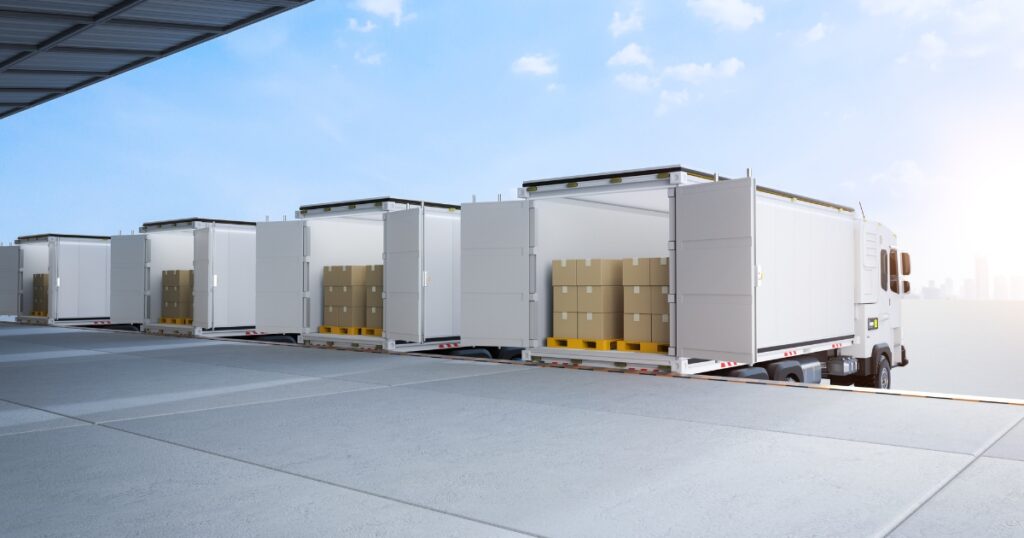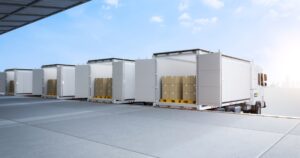In the world of logistics and transportation, businesses are always seeking ways to optimize shipping costs while ensuring timely deliveries. Partial truckload (PTL) shipping is a solution that offers flexibility, cost savings, and efficiency, making it an attractive option for companies with specific shipping needs. This article will explore the benefits of partial truckload shipping and how you can maximize its efficiency for your business.
What is Partial Truckload Shipping?
Partial truckload (PTL) shipping is a freight option that falls between less-than-truckload (LTL) and full truckload (FTL) shipping. Unlike LTL, where multiple shippers share space on a truck, PTL typically involves one or a few shipments that fill a significant portion of the truck’s capacity but do not require a full trailer. PTL is ideal for shipments that are too large for LTL but do not justify the cost of a full truckload.
Benefits of Partial Truckload Shipping
1. Cost Savings
One of the most significant advantages of PTL shipping is cost savings. Since you are only paying for the portion of the truck that you use, PTL offers a more economical solution compared to FTL. This is particularly beneficial for businesses that regularly ship goods that don’t fully utilize a truck’s capacity.
2. Reduced Handling and Lower Risk
Unlike LTL shipping, where shipments may be transferred multiple times between trucks and terminals, PTL shipments often stay on the same truck from pickup to delivery. This reduces the risk of damage, loss, or delays, as your goods are handled less frequently. The reduced handling also translates to faster transit times, as there are fewer stops along the way.
3. Greater Flexibility
PTL shipping offers greater flexibility in terms of shipment size and timing. If your shipment size varies or if you have time-sensitive deliveries, PTL allows you to optimize your logistics strategy without committing to a full truckload. This flexibility is especially valuable for businesses with fluctuating inventory needs or those that operate on tight schedules.
4. Faster Transit Times
Because PTL shipments typically avoid multiple terminal transfers, transit times can be faster compared to LTL shipping. This is particularly beneficial for businesses that need to get products to market quickly or meet strict delivery deadlines.
How to Maximize Efficiency with Partial Truckload Shipping
To fully leverage the benefits of partial truckload shipping, consider the following strategies:
1. Accurately Assess Your Shipment Needs
The first step in maximizing efficiency with PTL shipping is to accurately assess your shipment needs. Consider the size, weight, and volume of your goods, as well as the frequency of your shipments. Understanding your specific requirements will help you determine whether PTL is the most cost-effective option and how much space you’ll need on the truck.
2. Optimize Your Shipping Schedule
Timing is crucial in logistics, and optimizing your shipping schedule can lead to significant cost savings. If possible, consolidate shipments to take full advantage of PTL services. By combining smaller loads into a single, larger shipment, you can minimize the number of trips and reduce overall shipping costs.
3. Choose the Right Carrier
Not all carriers offer the same level of service for PTL shipping, so it’s important to choose a carrier that specializes in this type of freight. Look for carriers with a strong reputation for reliability, timely deliveries, and excellent customer service. Additionally, consider carriers that offer advanced tracking and communication tools, so you can stay informed about your shipment’s progress.
4. Properly Package Your Goods
Proper packaging is essential in PTL shipping to ensure that your goods arrive safely and in good condition. Use high-quality materials and secure your items to prevent shifting during transit. Label your packages clearly with relevant information, such as destination, contents, and handling instructions. Proper packaging not only protects your goods but also helps optimize space within the truck, allowing you to make the most of the available capacity.
5. Leverage Technology for Better Planning
Modern logistics platforms and transportation management systems (TMS) can help you optimize your PTL shipments. These tools allow you to plan routes, track shipments in real-time, and analyze shipping data to identify areas for improvement. By leveraging technology, you can streamline your logistics operations, reduce costs, and improve overall efficiency.
6. Monitor and Evaluate Performance
Finally, continuously monitor and evaluate the performance of your PTL shipments. Keep track of key metrics such as transit times, delivery accuracy, and cost per shipment. Regularly reviewing this data will help you identify trends, make informed decisions, and adjust your shipping strategy as needed to maximize efficiency.
Conclusion
Partial truckload shipping offers a balanced solution for businesses looking to optimize their logistics and reduce costs without compromising on service quality. By understanding your shipment needs, choosing the right carrier, and leveraging technology, you can maximize the efficiency of your PTL shipments. Whether you’re looking to improve transit times, reduce handling risks, or achieve cost savings, PTL shipping provides the flexibility and benefits that can help your business thrive in a competitive marketplace.








